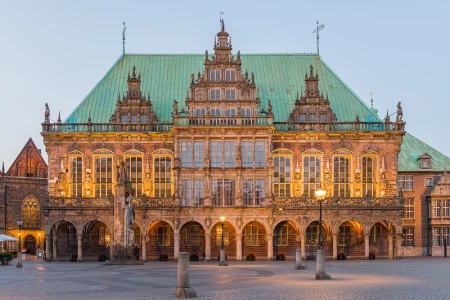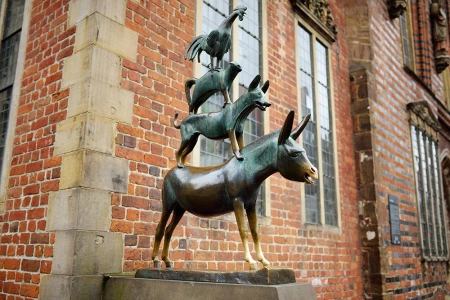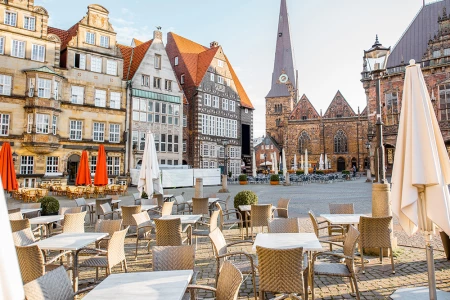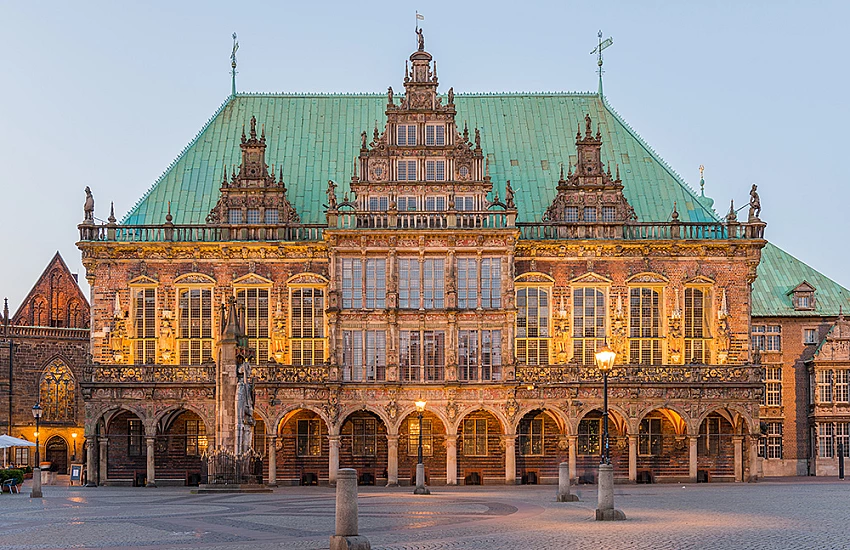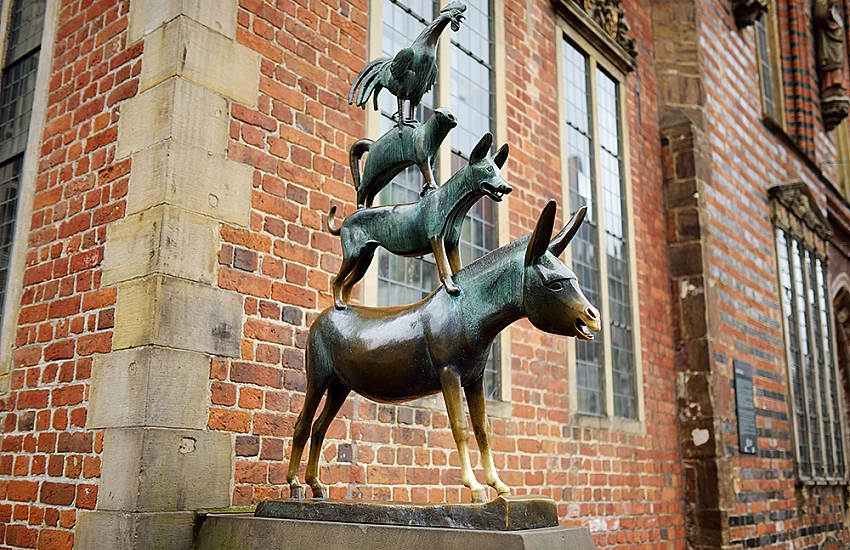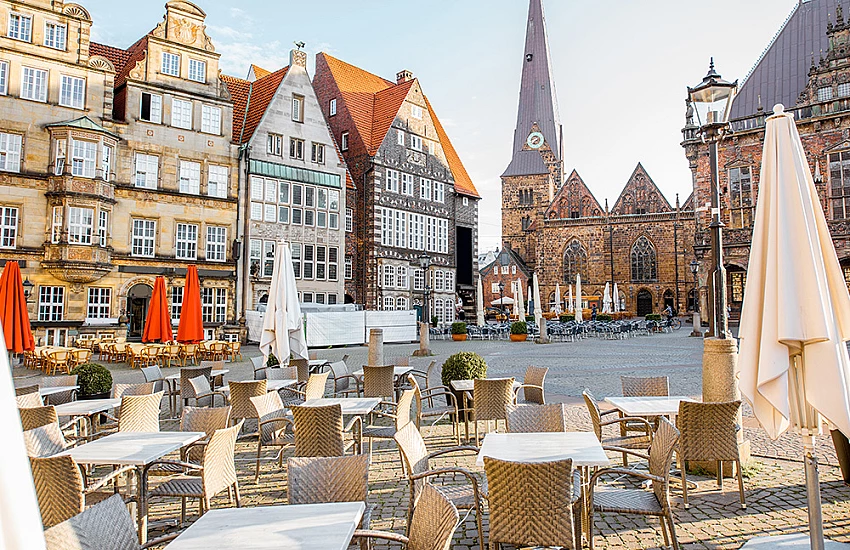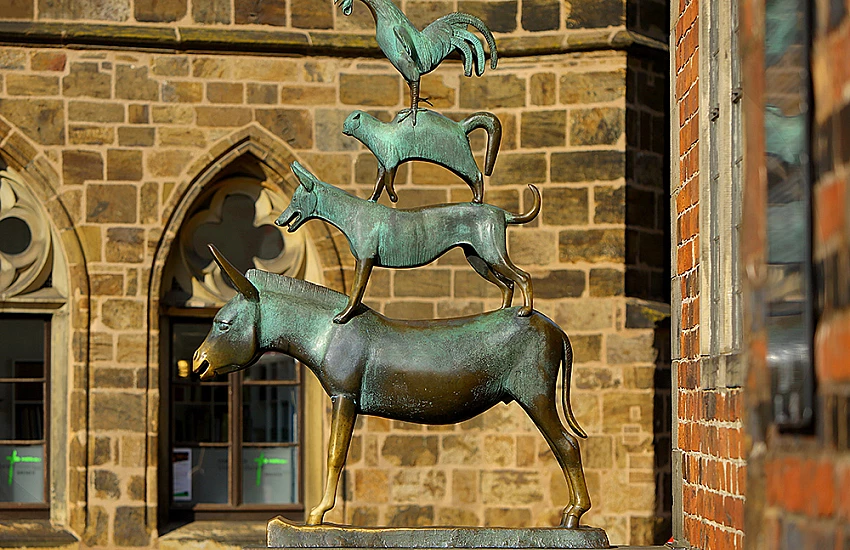
Tabla de contenidos
The tale of the Town Musicians of Bremen is a captivating story that has delighted audiences for generations. Originating from the rich tapestry of the Brothers Grimm folklore, this enchanting narrative weaves together the seemingly ordinary lives of an unlikely band of heroes: a donkey, a dog, a cat, and a rooster. Each animal, once burdened by age and neglect, finds itself rejected by its human owners.
Driven by a shared desire for freedom and a fresh start, these creatures embark on a quest to Bremen, where they hope to become musicians.
As they journey toward their new destiny, they encounter adventures and challenges that reveal the essence of friendship and cooperation. Despite their differences, the animals' combined strengths and determination create a formidable force. The donkey's endurance, the dog's loyalty, the cat's cunning, and the rooster's vigilance form a unique synergy that defies their frailties. Along the way, these unlikely adventurers stumble upon a cozy cottage sheltering a band of robbers.
Through their inventive teamwork and a touch of serendipity, they manage to scare away the villains, securing a new home for themselves.
The story's enduring charm lies in its universal message of resilience and self-discovery, showing that courage and camaraderie can turn the most mismatched of outcasts into unexpected heroes.
Origins And Evolution Of The Tale
The tale of the Town Musicians of Bremen originates from the rich tapestry of European folklore, specifically hailing from the fairy tales collected by the Brothers Grimm. First published in 1819, this story reflects the Grimms' efforts to preserve oral traditions that were at risk of being lost in the rapid societal changes of their time. The narrative tells of four aging domestic animals—a donkey, a dog, a cat, and a rooster—who escape their respective abusive owners and serendipitously form an unlikely alliance.
Aspiring to become musicians in the city of Bremen, they embark on a journey that ultimately tests their ingenuity and resilience.
Over the years, the tale has evolved and been adapted in various ways, retaining its core message of camaraderie and triumph over adversity. Its themes continue to resonate, leading to numerous interpretations in books, theater, and animated films. Artists and storytellers have expanded on the tale's setting and characters, bringing fresh perspectives while maintaining the essence of the original story. In these adaptations, the Town Musicians of Bremen have become emblematic of finding strength in unity and courage against life's trials.
This evolution reflects not only the enduring charm of the story but also its ability to inspire generations with its uplifting and empowering narrative.
Psychological And Moral Themes Explored
"Unlikely Heroes: How the Town Musicians of Bremen Captivated the World" delves deeply into the psychological and moral themes that resonate universally. One significant psychological theme is the quest for identity and belonging. Each character, facing obsolescence and rejection due to age or circumstance, embarks on a journey that mirrors the human desire for acceptance and purpose. Their venture to Bremen symbolizes the universal search for a place where one is valued, underscoring the resilience of the spirit when confronted with adversity and societal dismissal.
Morally, the story challenges conventional perceptions of usefulness and success. The animals’ transformation from perceived burdens to celebrated heroes highlights the theme of inherent worth and the potential for greatness even in the most unlikely beings. It emphasizes the value of solidarity and cooperation; despite their differences, the animals achieve far more together than they could alone, a poignant reminder of the strength found in community and diversity.
On a deeper level, the narrative addresses the fear of aging and irrelevance, confronting these anxieties with humor and hope. By illustrating how the animals turn their vulnerabilities into strengths, the story inspires a reevaluation of what it means to be a hero, suggesting that true heroism lies in adaptability, courage, and the willingness to embrace change.
Global Impact And Interpretations
The tale of the Town Musicians of Bremen has resonated globally, captivating audiences far beyond its German origins. Its widespread appeal can be attributed to its universal themes of resilience, camaraderie, and the triumph of the underdog. As the story of four aging animals—each deemed useless by their owners but finding new purpose through unity—unfolds, it challenges societal notions of obsolescence and the value of cooperation.
Worldwide, this narrative has inspired numerous adaptations, from children's books and animated films to stage productions and artworks, each iteration reflecting cultural nuances while maintaining the core message of hope and reinvention. In artistic circles, the story is often seen as an allegory for non-conformity, progressive ideals, and the power of collective strength, leading to its adoption in various educational and social activism contexts.
The animals, who embody qualities of creativity and courage, symbolize the unlikely hero within all of us, encouraging individuals to seek empowerment and challenge oppressive norms. This sense of agency and self-discovery has made the story particularly poignant in regions experiencing social and political upheaval. By striking a chord with audiences around the world, the Town Musicians of Bremen have transcended their fairy tale roots, emerging as a timeless emblem of transformative adventure and hopeful inspiration.
Adaptations In Literature, Film, And Music
The tale of the Town Musicians of Bremen, originating from the Brothers Grimm, has transcended its humble folktale roots to inspire a multitude of adaptations across literature, film, and music. Its enduring narrative of disenfranchised yet resilient animals banding together has resonated with creators, prompting a wealth of imaginative reinterpretations. In literature, the story has been retold in countless picture books and story collections for children, often with unique artistic interpretations that highlight the universal themes of friendship and perseverance.
Authors have taken liberties with the storyline, sometimes setting the story in different cultural contexts or using the characters as metaphors for social justice movements.
In the realm of film, the Town Musicians of Bremen have been animated into beloved classics, such as the 1969 Russian animated film, which captures the tale’s whimsy and charm. Various adaptations have explored modern settings or used the narrative as a backdrop for broader stories about societal unity and individuality.
Musically, the story’s themes have inspired composers to create operas and musicals, breathing life into the narrative through song. These adaptations often blend traditional storytelling with contemporary sounds, drawing listeners into the magical world of Bremen. Each adaptation in literature, film, and music underscores the timeless appeal of the unlikely heroes, celebrating their spirited journey and irreplaceable bond.
Legacy And Cultural Significance Today
The tale of the Town Musicians of Bremen, a story originating from the Brothers Grimm, continues to hold a prominent place in cultural lore worldwide. Its enduring legacy lies in its unique narrative that champions the themes of cooperation, resilience, and the transformative power of music and friendship. These unlikely heroes—a donkey, a dog, a cat, and a rooster—embody the triumph of the underdog, resonating with audiences across generations and cultures.
The narrative has transcended its origins, inspiring countless retellings in literature, theater, and film, each iteration capturing the spirit of unity against adversity. The story's universal appeal is rooted in its message that anyone, regardless of their perceived weaknesses, can overcome challenges through collaboration. It promotes the notion that courage and resourcefulness can defy expectations and shape destiny. Today, the Town Musicians of Bremen are celebrated not only in their native Germany but also around the world, with their statue in Bremen standing as a testament to their enduring fame.
Educational institutions often introduce the tale early in curricula to illustrate the values of teamwork and perseverance. By accentuating the beauty of harmony—in both music and companionship—this timeless narrative continues to inspire hope and creativity, perpetuating its cultural significance in contemporary society.






